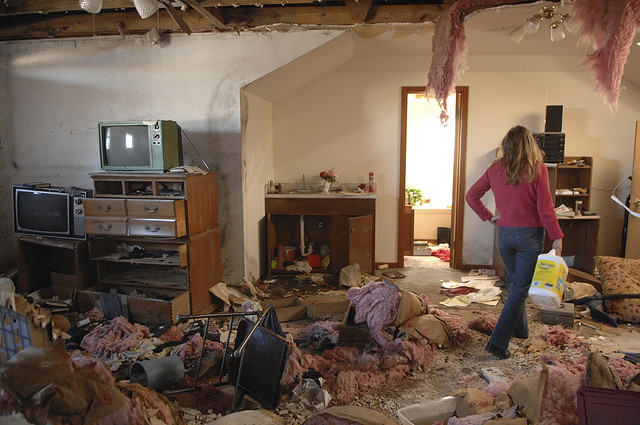
23 Sep What To Do If Your House Is Flooded
Photo by Troy Snow
What To Do If Your House Is Flooded
Your home is flooded – Now what?
The unthinkable has happened and your home is flooded. Indoor flooding can be caused by pinhole pipe leaks, sewage back ups, appliance failures, or Mother Nature coming to visit. Now you are wondering what to do. For safety and health reasons, it is important to remember to proceed with caution when you begin the arduous task of protecting your possessions and your home. Your health and safety are top priority, and must remain so during your efforts to recover your home.
Before stepping inside your home after a flood, be sure that the electricity has been turned off. Do not rely on the assumption that because the power is out throughout the neighborhood, you do not have live lines. Turn off the power yourself, or have an electrician perform the task.
Be mindful that with floodwaters debris, animal waste, trash, and possible sewage may contaminate the water. Properly protect your skin, eyes, and mouth with personal protective equipment (PPE), such as gloves, safety goggles, rubber boots, and an N95 mask. If you feel uncomfortable in any way entering your home, trust your instincts and call a professional. Licensed professionals, such as those at KADE Restoration, can provide flood mitigation services safely and reliably. (See: KADE Fixing Massive Fire and Flood Damage)
One of the first steps in the recovery process after a flood is to contact your homeowner’s insurance company to initiate the claims process. Before throwing items away, take thorough videos and photos of the property to document the damage. These videos and photos can serve as important records of your damaged belongings when it is time to negotiate with insurance adjusters.
When you are ready to begin the cleaning and drying out of your home, it is a good idea to decide on a plan for the process. Be mindful that water can cause major structural damages, so enter carefully and if there is ever a concern, have the professionals lead the way. Open windows and doors in every room regardless of whether or not you see water damage. The air circulation will benefit the entire home. Water-damaged items will need to be removed and restored if possible, or disposed of properly if mitigation is not a possibility. Complete removal of all water damage is essential, especially to prevent future occurrences of any mold outbreak or structure problems.
See Also: Water Saving Tips to Avoid Water Damage
